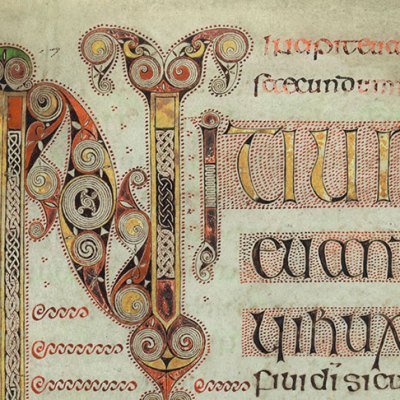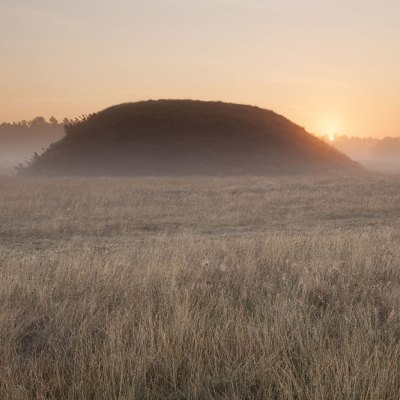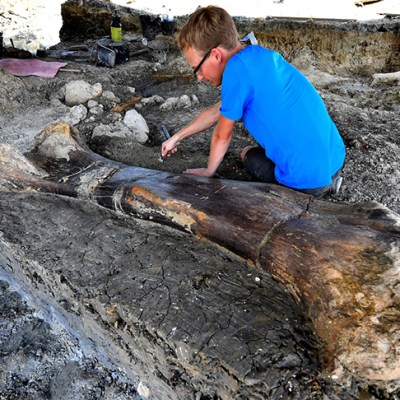Try finding a gentler escape from winter in a pandemic than spending 112 minutes in Suffolk’s waterways and sun-yellowed grasslands, the setting of The Dig, a tale of buried treasure, romance and heroism. Directed by Simon Stone and based on a novel by John Preston, the film dramatises the true discovery in 1939 by Basil Brown and Edith Pretty of the richest medieval grave to be found in Europe to date.
History tells us that Mrs Pretty, an amateur archaeologist, owned a tract of land in Sutton Hoo beside the River Deben. Intrigued by a grassy archipelago of mounds on the land, she employed the services of local excavator Basil Brown to see what, if anything, they might yield. When Brown discovered the vast imprint of an early medieval ship in the soil of the largest, the significance of the excavation became clear. Archaeologists were sent by the British Museum and, together with Brown, unearthed a breath-taking array of treasures, including a golden belt buckle, golden shoulder clasps inlaid with garnet cloisonné, remnants of a helmet decorated with dagger-toothed dragons and a silver bowl all the way from Byzantium. The ship was datable to the early seventh century and full of clues as to the culture and sophistication of its makers. This was surely the grave of a warrior king (the now-disputed ‘Anglo-Saxon’ is used throughout the film), belonging to one of the Germanic tribes to have come to Britain in the ‘Dark Ages’, a term that was coming to seem less and less appropriate. But no body was found. It is believed that the acidic Suffolk soil consumed the remains long ago. Now the artefacts are displayed in Room 41 of the British Museum, along with contemporary photographs and excerpts from Basil Brown’s meticulous archaeological notes.
Ralph Fiennes as Basil Brown in ‘The Dig’. Courtesy Larry Horricks/Netflix

The film is as much a crafted thing as the burial itself. Its writers explore the human quest for transcendence, as characters contemplate the afterlife of the soul and the legacy of life on earth. Basil Brown (Ralph Fiennes) speculates in mellifluous Suffolk tones upon the beliefs of those who created the ship burial, while Robert Pretty, the imaginative, solitary son of Edith Pretty (played by Archie Barnes and Carey Mulligan respectively), scampers around the excavation team with a tinfoil helmet on his head, dreaming of sailing through space. Later, lying in the belly of the ship-print, he imagines his deceased father as a king on a cosmic voyage. However, between the seafaring past and the starfaring future is the sticky reality of 1939. Gold is laid on cushions of emerald moss to the sound of planes grumbling overhead and war looms as, for the first time in over a millennium, the sun illuminates treasures once handled by an ancestor the Germans and the English shared.
Basil Brown’s teacher was his father. He in turn teaches Robert. One of the archaeologists on the dig, Peggy Piggott (Lily James), describes to the soon-to-be pilot Rory Lomax (Johnny Flynn) what will be left of them and their campfire in the forest in a thousand years’ time: ‘Parts of your watch. Torch. Fragments of the mug.’ And throughout the action, the camera lingers on Basil Brown’s notes and the taking of pictures (albeit not by the dig’s actual photographers, two teachers, Mercie Lack and Barbara Wagstaff), the originals of which have become vessels for this story. Details of characters and their relationships derived from these sources, among others, are subject to some embellishment. The credentials of the real Peggy Piggott, for instance, are downplayed, perhaps to increase the aura of villainy around Charles Phillips, a Cambridge archaeologist whose relationship with Basil Brown may not have been quite as tense in real life as the film implies.
Yet, at the centre of everything, hardly mentioned but gigantic, is the warrior king whose time-devoured corpse was the reason the ship was dragged over land, filled with riches and buried. His invisibility versus the magnitude of his legacy is a paradox that plays out across the narrative. It is reflected in the memory of Edith Pretty’s husband and in the work of Basil Brown, whose real-life involvement might easily have been written out of history due to his informal credentials. In the film’s subtle handling of gender and class, the fictional Brown avoids becoming yet another iteration of the heroic white male. The character’s erudition, his rootedness in the landscape, and his proud demeanour are portrayed with such quiet force that he could be a descendant of the long-lost king. And when a wall of earth tumbles upon him from the mound, he could be the king reborn.
The Dig (12A) is streaming on Netflix.



